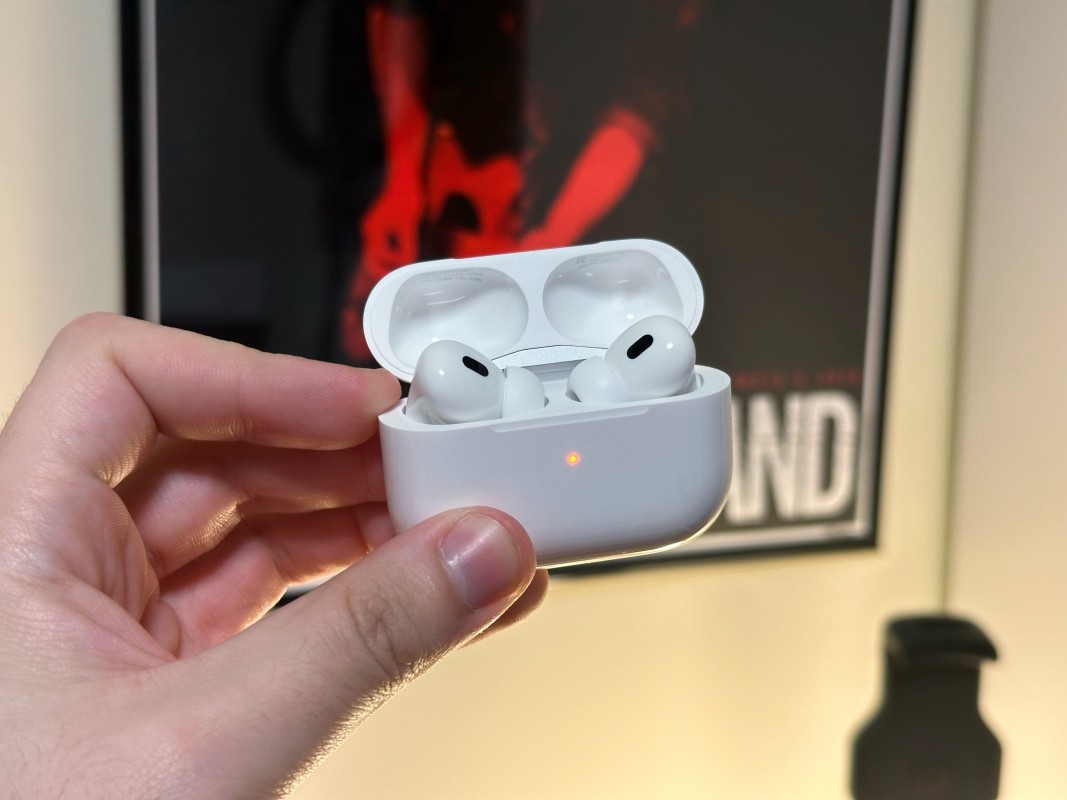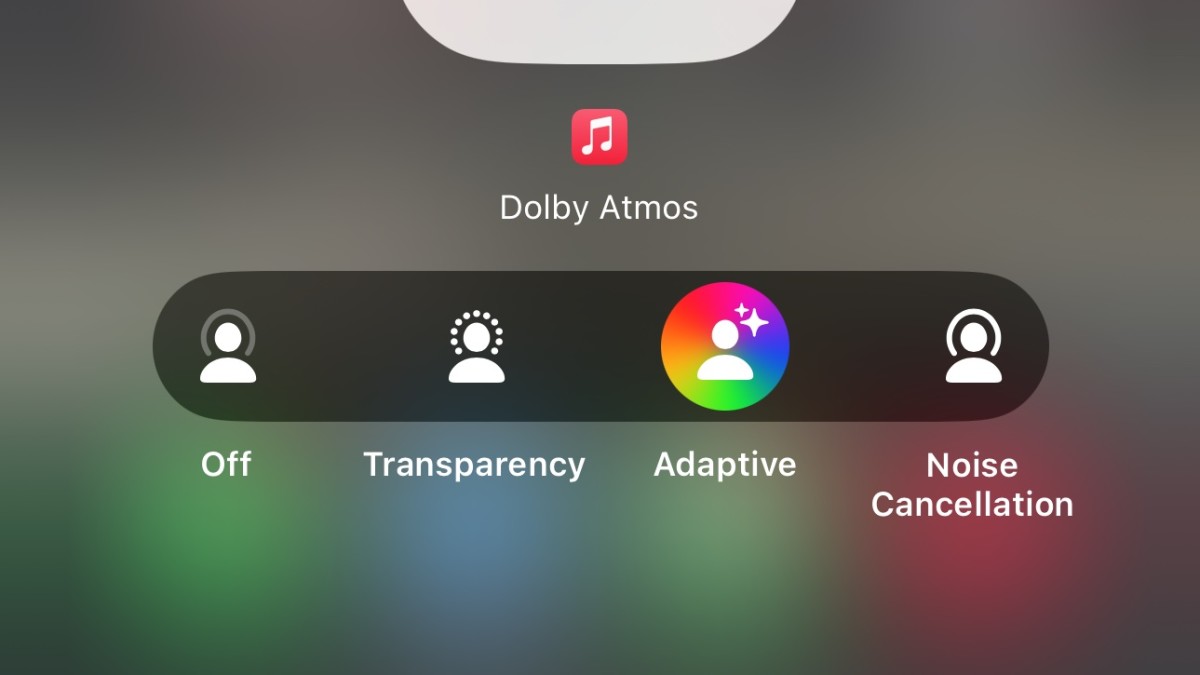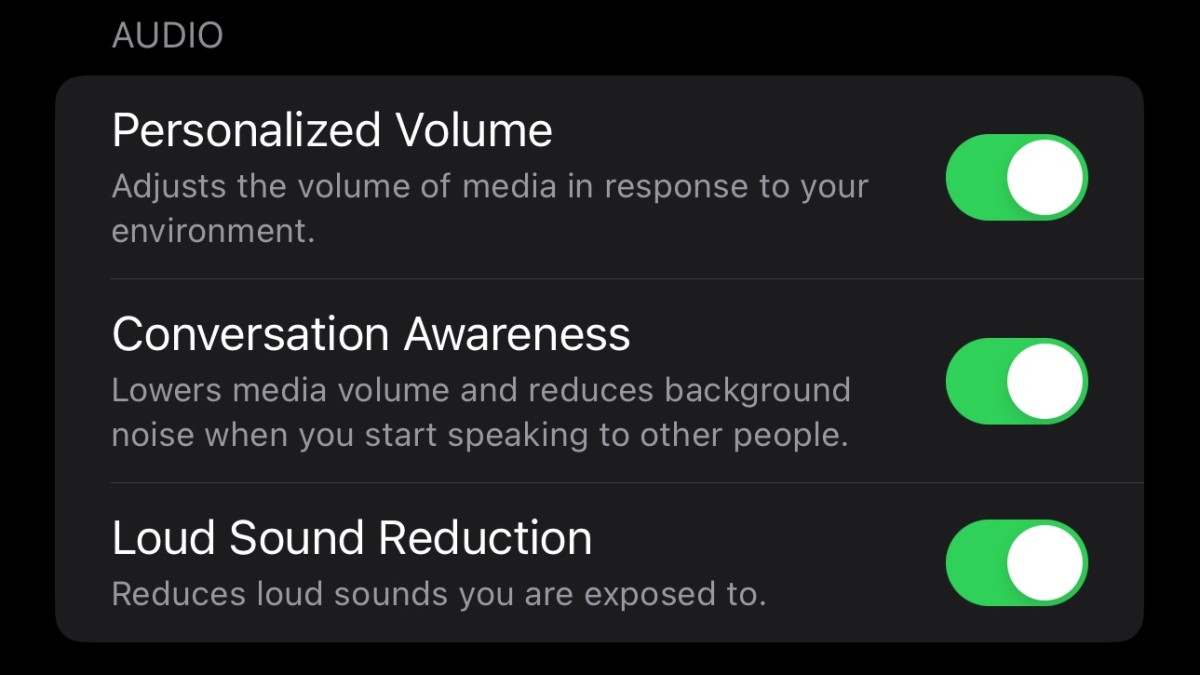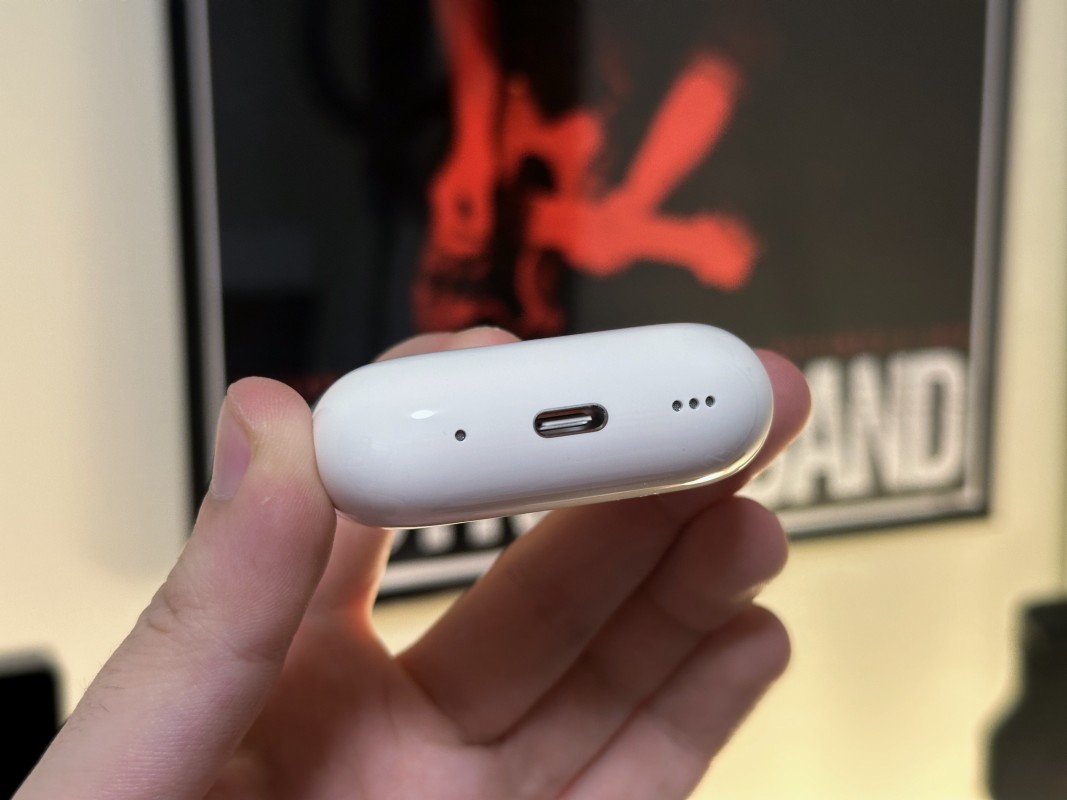
The Arena Media Brands, LLC and respective content providers to this website may receive compensation for some links to products and services on this website.
Picture this: You have earbuds in, and they're auto-adjusting as you walk through the airport, allowing enough sound in when you’re chatting with the TSA agent then reducing the background noise as you’re walking to the gate. Then, once you're settled in, buckled, and the plane is rolling on the runway, you think you'll hear the engine roar get louder, but instead, it gets shorter. You can listen to your music, Bruce Springsteen or Olivia Rodrigo, for me, but also hear the announcements when they come through while having some peace at 30,000 or so feet.
That's what Apple's Adaptive Audio mode for AirPods Pro 2nd Gen accomplishes, and it's a game-changer for travel. I've been testing Adaptive Audio for a few months on AirPods Pro with Lightning but also spent six days with AirPods Pro 2nd Gen with USB-C. The latter swaps the port and adds durability against dust.
Even if you already have AirPods Pro 2nd Gen with a Lightning port, you'll get the update, and if you've been waiting, you now have an updated pair that swaps for the universal USB-C port. Read on for my thoughts on how the USB-C port switches things up and, more importantly, how Adaptive Audio performs in real life.
AirPods Pro 2nd Gen with USB-C Case Pros and Cons
| Pros | Cons |
|---|---|
Adaptive Audio works as promised and is wicked good |
Apple is not selling the USB-C case separately |
The USB-C port is nice to have |
|
Still, the best-in-class earbuds experience that Apple delivered with the original AirPods Pro 2nd Gen |
Adaptive Mode is a smart combination of Transparency and Noise Cancellation

AirPods Pro 2nd Gen has offered class-leading active noise cancellation and transparency modes since their initial release in Sept. of 2022. The former is for blocking out the world around you, and these compact earbuds can effectively silence a window seat right next to an engine on a 777.
Similarly, Adaptive Transparency, lets the world around you into the mix incredibly naturally—there's no buzzing here or robotic autotune—but also lowers harsher sounds above 85 decibels to promote hearing health.
Adaptive Audio combines these two, and just like the Action Button on the iPhone 15 Pro or Spider-Man's ability to climb a wall, it's a superpower. The listening mode seamlessly blends noise cancellation and transparency. This way, it can block background noise but let in more pressing sounds or even folks speaking.
Like engaging ANC, you swipe down from Control Center, long press on volume, and when AirPods Pro are connected, you'll see a new option at the bottom called "Adaptive Audio." You can also long press on the stem to engage it quickly. A calming chime will play when engaged, and you'll immediately notice less fluff noise. It feels almost magical as it works as intended. For instance, sitting in a bustling hotel lobby, you'll encounter background noise and chatter from other patrons nearby; once I engaged Adaptive, it lowers the brunt of the noise, and with music playing, it all becomes very faint. If a louder noise appears, like a cart being pushed through the space, it will process it in real time and lower it specifically.
Let's take a more likely or commonly occurring scenario—I'm walking around my apartment with AirPods Pro, listening to some music with Adaptive on. It lowers the brunt of my HVAC system, similar to how the ANC performs, but I can hear a faint knock on my door as I'm expecting a package from FedEx. I open the door, and thanks to Conversation Awareness turned on, I can start talking, and AirPods Pro automatically switches to Transparency mode.
When I wrap the conversation, it takes a minute and then goes back to blocking out environmental sounds. It even raises the volume of the other person when I'm talking. This mode makes wearing AirPods Pro in more of these everyday situations less cumbersome, and they really just work.
Anyone with Nespresso knows they get pretty noisy when brewing, and with Adaptive, rather than hearing the loud bustle of the machine brewing a shot, it lowers it down intelligently. It speaks to the sheer processing power of earbuds smaller than a quarter. It processes that noise in real-time, identifying it and determining how to adjust the mix.
Powering it all is Apple's H2 chip, which contains over a billion transistors and makes all of the modes possible. Without it, Apple couldn't be dropping the new modes and rolling out as a free software update. That hardware works with custom software, algorithms, and even machine learning.
It's a triple threat and allows one to wear AirPods Pro in more scenarios without constantly needing to swipe down into "Control Center" on your iPhone and adjust the mode from ANC to Transparency. It avoids that awkward moment of wearing these, seeing someone you know, and then fumbling through settings or quickly taking an AirPod out.
You're likely curious about battery life and how Adaptive Audio impacts this, and I've been using them for several days. I've been averaging about six hours with standard Active Noise Cancellation or Adaptive Transparency. That's what I had during my initial testing period with the Lightning case and in the year since.
Conversation Awareness and Personalized Volume

I touched on this above, but Conversation Awareness is new as well. You can turn this on or off, but when AirPods Pro detects you are speaking to someone, they will lower the playback volume and swap into Transparency mode, even raising the volume of someone around you. It makes those moments much more natural and works like a charm 99% of the time.
The training for this is also smart enough not to interrupt the flow if you speak to yourself. I've thoroughly enjoyed using it, and I will say it has improved with not pausing when singing or belting out a song—it's not perfect with this and for those moments, it's better to turn the feature off.
The final convenience feature drop is Personalized Volume, which will learn your listening behaviors and adjust the playback volume based on how your environment shifts. So if it's take-off time on a plane, and it's engaging ANC higher while in Adaptive, it will also increase the volume. This one will improve with time as it learns your habits.
While AirPods Pro and any other model have always offered fast paring out of the box with an iPhone and quick switching between Apple devices, this entire feature set is greatly improved. Especially when switching the connection between an iPhone and a Mac, it's done in an average of about two seconds and can easily be tossed back or forth from one device to another.
You also will get a notification at the top of your iPhone letting you know if it was transferred, and on the Mac, you'll get a notification on the top right. You'll need to update to the latest version of iOS and macOS as well.
The USB-C port is a welcome addition to an already excellent experience

The leading feature of the updated case is a USB-C port, and Apple even includes a braided USB-C to USB-C cable with AirPods. It makes the transition more accessible, but the real point is that you can now bring one less cable with you … especially if you also jump to iPhone 15.
Now that's it USB-C, though, you can plug AirPods Pro into a Mac, an iPad, or even an iPhone to get a quick charge. It's limited to 4.5 watts with the latter, but that could save you when you're in a pinch.
AirPods Pro 2nd Gen with USB-C can also be charged via a MagSafe charger, an Apple Watch charging puck, or a standard Qi-enabled charger. That is still great news if you're in the Apple ecosystem, as you should never be in a bind regarding charging.
The USB-C styled case keeps the improved connectivity for quickly finding your AirPods Pro if they go missing. It's still a gamified experience with arrows pointing you in the right direction and distance from your iPhone as you get closer.
And the fan-favorite slot for a lanyard is still on the right-hand side. The USB-C edition of AirPods Pro is still water and sweat-resistant, but it also tosses in dust resistance. This means these are protected if they tumble in the sand or dirt.
As far as the rest of the AirPods Pro experience, this update improves a best-in-class experience. The fact that Apple is rolling out a brand new listening mode to a product a year later is great news for anyone who bought these.
Music on AirPods Pro 2nd Gen still sounds incredibly rich, and Spatial Audio within Apple Music still ups the immersion. The custom amplifier inside the Pros isn't a slouch and provides a wide soundstage to let you hear every element of the track down to the most minor details. "Born to Run" by Bruce Springsteen opens with a cinematic blast, and "Bad Idea Right?" by Olivia Rodrigo tests the lower end with consistent bass paired with ranging vocal tones.
Bottom line: Is AirPods Pro 2nd Gen with USB-C worth it?

Like the Lightning case variant, AirPods Pro 2nd Gen with USB-C is the best true wireless earbuds experience for the iPhone owner or if you're in Apple's ecosystem. You get a robust listening experience for any genre, long runtime, substantial noise cancellation and transparency modes, and a first-of-its-kind Adaptive Audio experience.
Considering that AirPods Pro 2nd Gen with Lightning Case is getting new listening modes, Personalized Volume, Conversation Awareness, and improved quick switching, you don't necessarily need to run out and buy a new pair. The case for that would be if you want the USB-C port and the improved durability for dust.
But if you're new to AirPods entirely or have the first pair of AirPods Pro, this is a night-and-day improvement. It's the same if you're coming from AirPods 2nd Gen or AirPods 3rd Gen, as you'll get a complete seal of the ear, improved battery life, and three listening modes.
Apple's AirPods Pro 2nd Gen with USB-C is up for order now at $249—the same price as the Lightning case—at Amazon and will begin arriving to customers on Sept. 22.
Of course, while supplies last, you can get AirPods Pro 2nd Gen with Lightning. You'll also save a bit, as Amazon is discounting those to just $199, but you'll want to act fast before they sell out.
Prices are accurate and items in stock at time of publishing.







